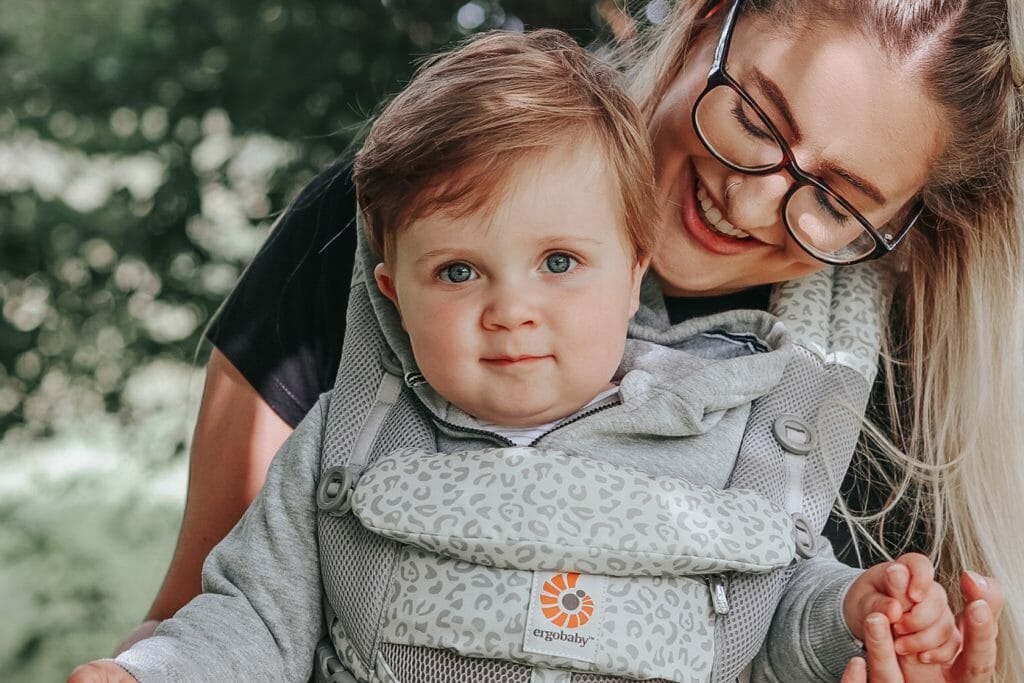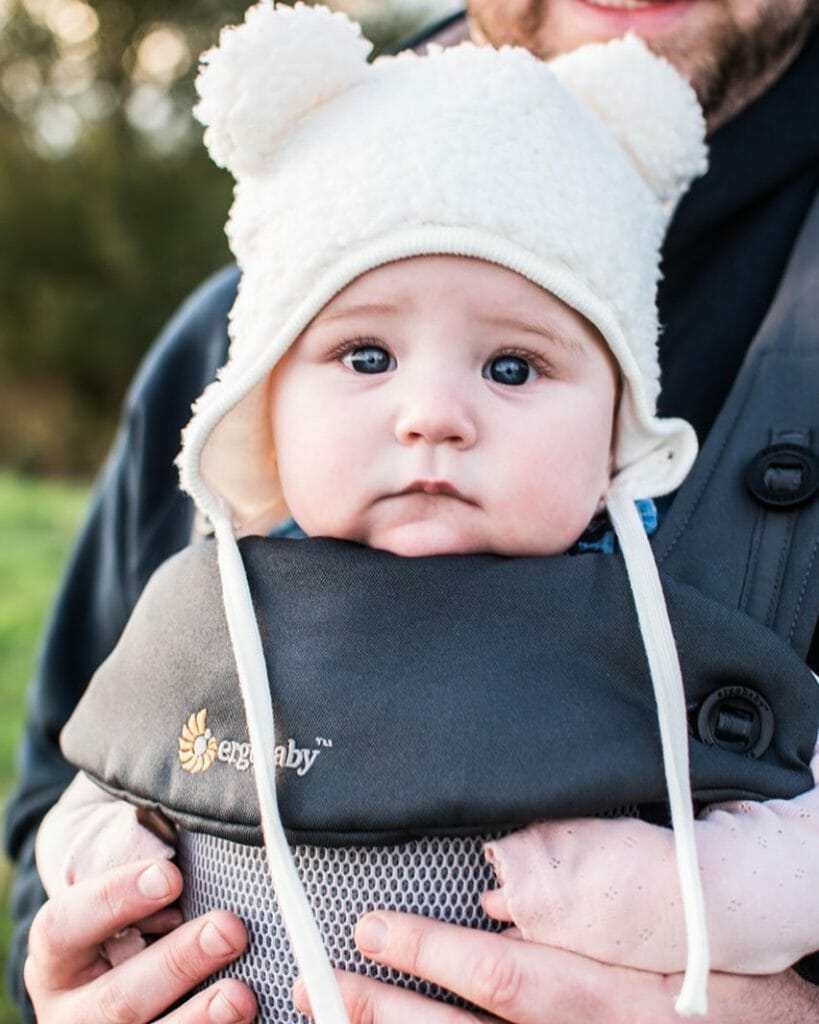
When shopping for a baby carrier, wearing baby in a front outward facing position is a feature that a lot of parents look for. Although some babies do not enjoy being carried facing outward, many love being able to watch the world around them, exploring new sights and sounds with the comfort of you close behind.
Unlike sitting facing the world in a stroller, wearing your baby front outward facing means she is held up higher where she can see over the fence at the farm for you to point out the animals or up at conversational height on a woodland walk, able to reach out and touch the leaves.
Before you embark on your world-facing adventure, you should know the signs that mean your child is ready, how to wear baby in an optimal, front outward facing position in our Embrace, All Position 360, Aerloom or Omni carriers and when baby needs to be turned back to a parent-facing position.
Signs Baby is Ready to Try Front Outward Facing
As baby’s brain develops and their muscles strengthen, they may begin showing you signs that they want to face the world. It is important to remember there is no rush and inward facing can still offer an outward view for your child.
Once baby’s chin is above the front panel of the carrier when sitting in the carrier
Baby should be tall enough to for their chin to clear the top of the carrier, if it obstructs their face they are still a little small.
When baby has strong head & neck control (often around 5-6 months) and can sit upright unaided
Babies should be able to comfortably support their own head and neck. A good test of this is whether they can sit on the floor by themselves, completely unaided or propped up.
When baby has a natural curiosity to see and interact with the world
Babies will develop a natural interest in the world around them, however this should only be taken as a sign that baby is ready to face outwards along with the above two criteria. Babies are born with an immature nervous system and are easily overstimulated by too much noise, activity, and sensation in the world around them. We recommend starting with short durations (5-10 minutes) to prevent over-stimulation. If baby shows signs of over-stimulation (zoned out, catatonic, fussy, tired) or sleepiness, just turn them back around to front-inward, so they can find comfort in their wearer and rest.
credit: @sophiecallahan
When NOT to Wear Baby Outward Facing
Baby still requires the infant insert in our All Position 360 carrier.
Using the infant insert suggests that baby is under 4 months old and would not be developmentally ready to face outwards. If baby is over 4 months, but still needs the insert as he is on the small side, he may not be able to sit comfortably with his chin above the main panel of the carrier if facing outward. This means baby is not ready for front outward facing.
Baby is under 5 months old and/or does not have strong and consistent head and neck control.
Baby’s airway can become compromised if they do not have the strength to hold up their head steadily for a prolonged period of time. Usually, baby will have this strength between 5-6 months.
You are wearing baby in our Original or Adapt Baby Carrier.
These carriers are not designed to hold baby ergonomically in the front outward facing carry position.
Baby is sleeping.
It is NEVER safe for baby to sleep whilst outwards facing.
If baby falls asleep in the front outward facing position, it is important to switch to an inward facing carry position, where baby’s head is supported against your body. This should stop baby’s chin from touching her chest and compromising her airway.
Baby is showing signs of overstimulation (zoned out, catatonic, fussy, tired).
In new, busy or crowded environments, it is easy for baby to become overstimulated. Their brains have not yet developed the skill of being able to filter out unnecessary information about their surroundings.
Signs of overstimulation are :
- Appearing zoned out
- Catatonic
- Fussy
- Tired

credit: @ motheringboys_
How to Check for Optimal Front Outward Facing Positioning in our 360 & Omni 360 carriers
When outward facing in our Omni 360 Carrier or 360 Carrier, the seat buttons should be changed from black to grey. These should be changed back to black when changing baby back to an inward facing carry position.
When outward facing in our Omni 360 Cool Air Mesh Carrier, Omni Breeze Carrier or Omni Dream Carrier the sliders should be pushed down to the lowest possible position. The sliders should be pulled back to the top when changing baby back to an inward facing carry position.
Make sure baby’s legs are supported and their hips are in an optimal position, you can use the Pelvic Tuck to achieve this.
Our Ergobaby baby carriers are all ergonomic, including our Embrace, All Position 360, Aerloom and Omni models which offer an ergonomic, front outward facing position. These carriers were developed in response to parents’ requests for an ergonomic fourth position option for babies over 5 months.
These carriers have been developed with input from parents, midwives, babywearing educators and our design team, all focused on ergonomics.
Our message is simple: follow your baby’s lead and respond to their cues. We acknowledge that parents know their babies best, so choose the position and carrier that works for you and your family.




